The post Why you need to learn Python? appeared first on Magnimind Academy.
]]>Key reasons to enroll for Python training
![]()
Here’re the most important reasons you should learn this high-level, general-purpose programming language.
- Use in data science: You’re probably aware of the fact that data science is being considered one of the most respected, prominent, and attractive career paths in the tech field these days. By completing a Python course you’ll be able to fuel your data science career as the language comes with a great number of frameworks and libraries such as NumPy, PyBrain, PyMySQL, SymPy etc that would make your job as a data science professional relatively easier.
- Use in artificial intelligence and machine learning: Similar to data science, Python is also being heavily used in machine learning as it helps to build algorithms utilizing statistics in order to enable computers to perform various actions. Some of the major Python modules that help in machine learning include Scikit-learn, Theano, Tensorflow, among others. With the help of libraries like Keras, you’ll be able to manage neural network experimentation as well.
- Simplicity: One of the biggest advantages of learning Python is its high simplicity. When you’re a beginner in coding and programming, generally you don’t want to begin with a language that comes with weird rules and tough syntax. Python isn’t only simple and readable, but it easier to setup as well as you don’t have to handle any compiler issues like C++ or classpath problems like Java. All you need to do is install Python and start exploring it.
- Robust community: Regardless of the language, a community always plays a highly crucial role when it comes to learning it. Python comes with a massive community that’ll always be there to lend you a helping hand whenever you get stuck with one or multiple issues. Today, you can easily find the solution of any of your Python related problems within minutes by doing a simple Google search.
- High prospect: As the language is growing steadily and is being adopted by a significant number of tech giants as their primary language, it makes lots of sense to obtain a Python certification in order to make your career future-proof. It’d not only make job-ready quickly but will accelerate the career growth as well.
Conclusion

Put simply, by completing a Python course you’ll never have to face a shortage of options to utilize your skills. And since a lot of tech giants rely on the language, you’ll always be in a position to make good money as a Python certification holder.
. . .
To learn more about python, click here and read our another article.
The post Why you need to learn Python? appeared first on Magnimind Academy.
]]>The post Where is Python used in the real world? appeared first on Magnimind Academy.
]]>If you’re planning to get enrolled in a Python course or online Python training program, knowing some real-world applications of Python would help you choose which specific field you want to focus on for your career. Here are the top three applications of Python:
1- Web and Internet Development
![]()
Using Python, you can easily develop web applications rapidly. Python has a number of libraries for internet protocols like XML and HTML, e-mail processing, JSON, IMAP, FTP, etc. You can even use the following libraries for a range of functions:
- BeautifulSoup – for parsing XML and HTML documents
- Requests – a client-side HTTP library
- Paramiko – For executing the SSH2 protocol
- Feedparser – for downloading and parsing Atom/RSS feeds
- Twisted Python – for asynchronous network programming
With widely used Python frameworks like Django, Pyramid, and Flask, you can enjoy unparalleled convenience, scalability, and security when working on web development compared to starting website development from scratch. With Python, you can also get microframeworks like Bottle and Flask. You can even write CGI scripts and get advanced CMSes (content management systems) such as Django and Plone CMS.
2- Machine Learning and Artificial Intelligence
![]()
Those eyeing a career in data science, machine learning (ML), and AI (Artificial Intelligence) often take up a Python certification program to fast-track their career. Apart from being extremely user-friendly and easy to earn, Python has multiple libraries that offer support for these domains. Some of these are:
- TensorFlow – an end-to-end Python ML library for performing high-end numerical calculations.
- Scikit-learn – a well-known open-source Python ML library with a wide range of clustering, classification, and regression algorithms.
- Keras – a leading open-source Python library for building neural networks and machine learning projects.
- Theano – a renowned scientific computing library that lets you classify, optimize, and assess mathematical expressions that deal with multidimensional arrays.
- PyTorch – a production-ready Python ML library with outstanding applications, examples, and use cases supported by a robust community.
NumPy, Seaborn, and Python Pandas are some other libraries that you can use.
3- Game development
![]()
Several interactive games (like Disney’s Toontown Online, Civilization-IV, Vega Strike, etc.) and 3D graphics have been developed using Python. Libraries such as PyGame (that provides functionality via computer graphics and sound libraries) and PySoy (a 3D game engine that supports Python 3) as well as frameworks for game development like PyGame and PyKyra make game development an easy and quick job.
Final words

Education, business (e-commerce and ERP systems), software development, desktop applications, and database access are some other domains where you’ll find the use of Python. So, take your pick from these fields of Python applications when you enroll for a Python certification program.
. . .
To learn more about python, click here and read our another article.
The post Where is Python used in the real world? appeared first on Magnimind Academy.
]]>The post Learn programs that make your life easier with Magnimind Academy appeared first on Magnimind Academy.
]]>Key reasons to join Magnimind Academy
![]()
First of all, data scientists need solid skills in programming, statistics, and computer science. Regardless of your major, you’ve to focus on the courses that would help you develop a solid understanding of these. For instance, Python – the full-fledged programming language is a perfect fit when it comes to implementing algorithms. Almost every newer data scientist gravitates toward this language because of its simplicity and ease of use. It also offers a programming platform which comes with high compatibility with data science, machine learning, and many other emerging technologies. In short, Python won’t let you bog down with complex programming requirements by allowing you perform tasks in a hassle-free manner. If you’re new to this language, the Data Analysis with Python mini bootcamp should be the perfect course for you while the Introduction to Python mini bootcamp would be ideal for students who’ve got some fundamental understanding of Python.
Next comes SQL or Structured Query Language which is considered to be one of the most sought-after skills in data science, together with Python and R. One of the key advantages of SQL is that when you’re working with data, it’s directly accessed and that speeds up workflow executions considerably. From a data science viewpoint, SQL can be used for both machine learning and data pre-processing purposes. If you’re interested in obtaining more knowledge about the language, we’d strongly suggest you to join the SQL for Data Science mini bootcamp offered by Magnimind.
Lastly but perhaps the biggest reason of joining Magnimind is its offering of completely immersive training programs in form of bootcamps. They’ve designed these training programs for students coming from a diverse range of technical backgrounds. To excel in their field, data scientists must need a variety of tricks and tools to process Big Data and their bootcamp is fully focused on the details. The concepts supporting various technologies are greatly explained by the instructors while allowing students to obtain valuable, hands-on experience. And when it comes to career preparation, Magnimind places a great emphasis on it, including job interviews and hiring fairs. And the best part is their data science bootcamp in Silicon Valley fully embodies the techno-meritocracy spirit of the technology hub, where anybody with a love of data science can hack his/her way to competency.
. . .
To learn more about data science, click here and read our another article.
The post Learn programs that make your life easier with Magnimind Academy appeared first on Magnimind Academy.
]]>The post Why is Python a language of choice for Data Scientists? appeared first on Magnimind Academy.
]]>What makes Python ideal for data science?
![]()
Here’re the key reasons why Python is being considered among the fastest-growing languages across the world.
- A complete package: Apart from being a general-purpose language, Python is tailor-made for every data analysis task. Data scientists need to use lots of algorithms for which the language is tailor-made as well.
- Easy implementation: For any data scientist it’s crucial to understand the language before going into intricate details of artificial intelligence or machine learning. Since Python is popular as a beginner’s language and doesn’t come with a steep learning curve, they don’t need to think about spending time on learning how to code using this language. Python programming language is popular for making programs work well with the minimal lines of codes possible. This simplicity is one of the biggest factors that have helped Python achieve this place.
- Libraries and scalability: All the libraries preferred by data scientists are available in Python. It also comes with a significant number of exclusive libraries. In addition, Python has become the best scalable language as one can develop concrete applications with ease. This feature is ideal for data scientists working to develop certain data analysis applications and models.
- Massive community: Python is accompanied by a robust community. This community is highly cooperative and there’re people who’re making the job of data scientists easy by helping them in different ways. If you’re a data scientist and experiencing some issues related to Python, most likely you’ll get the answer by presenting your query to a Python
Apart from all these, the ability to perform machine learning tasks is probably the biggest factor that has given Python programming language a solid edge over its competitors. It’s equipped with almost all the packages a data scientist may ever need. From scientific computing and statistical modeling to linear algebra and symbolic algebra, and many more – one can find the required packages readily available.
Keeping the above advantages of Python in mind, it can be said that it has become imperative for aspiring data scientists to obtain a Python certification. As a Python certification holder, you’ll be able to add tremendous value to your resume and to make the path of becoming a data scientist somewhat easier than those who don’t. In addition, if you’re looking to switch your career and step into the field of data science, it’ll be easier to demonstrate that you’ve got the requisite knowledge to manage various data-related projects when you’ve got a Python certification. And finally, as a certified Python professional, you’ll be able to get better jobs coupled with bigger salaries.
. . .
To learn more about data science, click here and read our another article.
The post Why is Python a language of choice for Data Scientists? appeared first on Magnimind Academy.
]]>The post What is the Python Programming and the content of Python Certification? appeared first on Magnimind Academy.
]]>1- Key features of Python programming language
![]()
The huge popularity of Python programming language heavily relies on the unique features offered by it. Let’s have a look at the features of Python that set it apart from other programming languages.
1.1- Simple to learn
![]()
Python is highly simple to get started with. It comes with a simple setup, easy to understand syntax and many practical applications that are heavily needed in web development. The syntax is relatively simple compared to other languages and a bunch of modules can be imported to make the code much shorter. There’re some straightforward, excellent tools available to work with Python code, particularly the interactive interpreter. It eliminates the need for learning special text editor, IDE, or anything else to begin using Python programming language. All you need to have a command prompt together with the interactive editor.
1.2- A beginner’s language
![]()
For a beginner in the programming domain, starting with a language which is difficult to learn not only slows the pace of the learning but brings additional complexity also. With Python programming language, a beginner can be introduced to the fundamental concepts like procedures and loops quickly and probably can work with user-defined objects in his/her initial stage of learning. Python’s hug syntactical simplicity lets a beginner use advanced or basic concepts, without much boilerplate code which is common in many other languages.
1.3- Interpreted language
![]()
If you’re familiar with programming languages like Java or C++, you’re probably aware that in order to run them, you’ve to compile them first. But in Python programming language, there’s no need to compile it. All you need to do is run the Python code without thinking about linking to libraries. Here, interpreted means the source code isn’t executed all at once, instead it’s executed line by line, which makes it easier to debug the code. In Python, the source code gets converted into ‘bytecodes’ which is then translated into the native language of a specific computer.
1.4- Object-oriented language
![]()
A programming language, which comes with the ability to model the real world, is considered object-oriented. It concentrates on objects and merges functions and data. Python has object-oriented features. Class mechanism of Python adds classes with a minimum number of new semantics and syntax. Here, multiple inheritances are also supported.
1.5- Free and open-source
![]()
Python programming language is freely available which means it can be downloaded from the official site by anyone. Python being open-source means you can read its source code, modify it, use pieces of it, and distribute copies of it freely.
1.6- High-level language
![]()
Python is a high-level language which means programmers don’t need to remember its system architecture or manage the memory. This feature makes Python highly programmer-friendly.
1.7- Portable language
![]()
Let’s consider you’ve written code in Python programming language for a Mac machine and you want to run it on a Windows machine. There’s no need to make changes to perform it, meaning you can take a single code and run it on any other machine without having to write separate codes for separate machines. This portability is another key feature of this language.
1.8- Extensive libraries
![]()
Python programming language comes with extensive libraries which can be used to eliminate the need of writing own code for each and every single thing. There’re libraries for unit-testing, documentation-generation, regular expressions, databases, web browser, image manipulation, image, and a lot more.
1.9- Extensible language
![]()
Some of the Python code can be written in other languages such as C++ if required. This feature makes Python an extensible language which means you can extend it to other languages.
2- Why you should learn Python programming language?
![]()
We’ve already seen that Python programming language is surprisingly easy to learn and you can use it as your stepping stone into other frameworks and programming languages. Across the globe, Python is heavily used by some giant companies like Google, IBM, Nokia, Pinterest, Disney, Instagram, and many others. Since a lot of giant organizations depend on it, it’s extremely likely that you’ll never have a paucity of ways to earn good money using your Python skills. If you’re still feeling hesitant whether you should learn Python programming language, have a look at the following advantages that you’d be able to enjoy once you become a master of it.
2.1- Data science
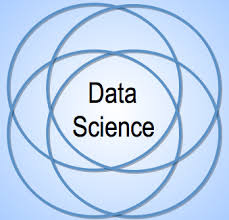
This is the biggest reason you should focus on learning Python programming now. Though R was considered perfect for data science tasks till sometime back, with lots of frameworks and libraries Python has become the most preferred language among data scientists across the globe these days. In addition, you can a lot more with Python than R. For instance, you can automate staff, create scripts, step into web development etc once you become a master in Python programming language.
2.2- Machine learning
![]()
This is the second most important reason to learn Python now. The exponential growth of machine learning has attracted a huge number of businesses to leverage this technology. With algorithms becoming sophisticated day by day, we can expect to see more advanced and diverse implementations of machine learning in the technology domain. If you want to play around machine learning or do a pet project, Python is the only major language that makes it easy.
2.3- Web development
![]()
With lots of good frameworks and libraries, Python programming language makes web development actually easy. For example, you can complete a task in minutes on Python, whereas it’ll take hours to be completed in PHP. There’s a huge number of web developers who’re using Python frameworks like Flask and Django to develop web applications in minimum time.
2.4- Massive community
![]()
This is another key reason to start your programming career with Python programming language. Presence, as well as the size of the community, can act as a great differentiator when you’re learning something new. You can find the answer to almost any of your queries related to Python in minutes with the help of its communities.
2.5- Multipurpose
![]()
Another key factor behind the huge popularity of Python is its multipurpose nature which means it’s not tied to only a single thing. For example, R is good on machine learning and data science but fails to add any value when it comes to web development. By learning Python programming language you’ll be able to do a lot of things: from doing data analysis to creating web applications to automating tasks to writing scripts.
2.6- It pays well
![]()
When it comes to salary, Python professionals belong to some of the highest paid groups in the industry, especially those working in the machine learning, data science, and web development domains. While tech salaries greatly differ from one region to another, they stay in a very good range, anywhere between 70K and 150K based on the domain, location, and experience.
2.7- High demand
![]()
Based on popular job portals, it looks like having a Python programming certification under your belt can greatly help you get a decent job within a short time. In addition, the demand has increased exponentially these days because of the widespread implementation of data science and machine learning.
3- Things to know about the content of Python certificate
![]()
Having a Python certification gives you a competitive advantage when you appear in front of the hiring managers. While competitions in the technology domain are rigorous, having such a certification can change the scenario completely for you. A Python programming certification demonstrates that you not only have a robust understanding of the language but are determined to improve your skillset as well. In addition, having a certification greatly helps you move up the corporate ladder quickly. Lastly, by obtaining a Python programming certification you’ll be able to earn significantly more than those who don’t. If you’re interested to know about what you’ll learn by completing a Python certification course, here’s an overview of the content of Python certificate programs.
- Introduction to and importance of Python
- Introduction to Python programming language semantics, syntax, runtime environment etc
- Understanding operations, functions, class defining etc
- Understanding Hadoop deployment
- Understanding machine learning algorithms in the context of Python
- Working on real-life projects running on Python
Python programming certification course can be taken by Project Managers and BI Managers, Software Developers, Big Data Professionals, Analytics Professionals, and anyone interested to build a career in Python. Beginners without any previous programming experience can also take up a Python certification course to step into the technology field quickly.
Conclusion

However, it’s extremely important to complete your Python programming certification course from a reputed institute. Things you need to review meticulously include the content of Python certificate program, whether the course is designed by industry professionals, facility to receive hands-on experience, job assistance after successful completion of the program, among others.
. . .
To learn more about python, click here and read our another article.
The post What is the Python Programming and the content of Python Certification? appeared first on Magnimind Academy.
]]>The post How should you learn programming like Python, R? appeared first on Magnimind Academy.
]]>Before we delve deeper into how should you learn programming, we should give you an overview of why you should learn Python and R.
1- Key reasons to learn Python and R
![]()
If you’re planning to learn programming and start with Python, here’re the reasons you should dive in without any hesitance.
- Easy to learn: Though Python is a highly powerful language, its simplicity makes it one of the most preferred languages among aspiring programmers.
- Data science: Python is the language of choice of a huge number of data scientists. Though private researchers and academic scholars have been using the MATLAB language, the scenario started to change with the emergence of Python numerical engines like Matplotlib.
- Machine learning: This is one of the biggest reasons to start with Python when you’re planning to learn programming to step into the field of machine learning. If you want a pet project in machine learning or just wish to play around it, Python is the only prominent language that makes it easy.
- Widely used: Python is used in a wide range of software industries and packages. For example, it powers Reddit, Quora, Google’s search engine, Dropbox, just name a few. As a skilled Python programmer, you may be able to grab a job at one of these giant companies.
- An object-oriented language: A solid grasp of the basics of Python can help you migrate to any object-oriented language of your choice as you’d only need to learn the new language’s syntax.
- Huge community: Whenever you’re trying to learn programming, a robust community becomes your biggest asset. Thanks to its vast community, you’re most likely to find the answers to any of your Python related queries in minutes.
- Professional growth: Python is growing pretty fast and it makes sense to start your journey to learn programming with this language. Once you become an expert, you can not only get a job quickly but will be able to accelerate your career growth. And Python developers belong to the league of highest paid developers, especially in the fields like web development, data science, and machine learning.
R programming language is specialized for statistical computing and was designed by statisticians. With the advancements in technology, the data captured by businesses has become highly complex, and R has become the most preferred language among professionals need to analyze data. If you’re still thinking of why you should learn R, here’re some key reasons that you can consider.
- A powerful scripting language: R can handle complex, large datasets and is a great language to use for resource-intensive simulations.
- Data visualization: Data visualization is considered to be easier with R as it comes with a lot of useful tools and built-in functionalities which make performing certain tasks more straightforward.
- Statistical packages: When it comes to statistical packages, R is absolutely free. All you need to do is download it and get started. On the other hand, software like SAS, STATA, and SPSS can cost you heavily for a license.
- Robust statistical community: R is supported by a solid widespread community which maintains lots of user groups that allow you to learn and exchange ideas.
Since R is extremely flexible, both as a programming language and a statistical package, its usages continue to increase as a reliable tool for an array of statistical computations.
If you hold limited programming language or are planning to learn programming, familiarizing yourself with languages like Python and R can prove to be the best initial step in advancing your career.
2- Different approaches to learn programming
![]()
If you’re planning to learn programming, both Python and R both can greatly help you in taking your career to the next level. When it comes to learning these languages, there’s a wide range of resources available. It actually comes down to the learning method that suits you the best. Here’re the most popular resources from which you can take your pick based on your preferences.
2.1- Online resources
![]()
Whether you like a hands-on approach or a textbook approach or a lecture hall approach to learn programming, you can find it online. Courses revolving around hands-on approach usually include projects, lessons, and quizzes to help you learn Python and R. In general, with a free account you can access interactive lessons and exercises, but a pro account is required to practice with project challenges and quizzes. There’re some websites that are considered goldmines of articles, tutorials, and documentation on programming languages. These are usually free resources and can greatly help you in learning Python and R, regardless of whether you’re a beginner or looking to learn complex topics. You can also learn programming by opting for MOOCs (massive open online course). Usually, there’re no entry requirements for MOOCs and you can participate regardless of your financial circumstances or where you live. It’s important to note that because of the large number of people attending MOOCs, you’ll usually receive support from different communities of educators, as well as other learners. And your progress on learning Python and/or R might be assessed through computer-marked tests or peer-reviewed written assignments, rather than by tutors. You can also use GitHub to learn programming through an exploratory approach. However, this method is ideal for people who’ve some experience in languages. Anyone can use this centralized repository to house and maintain code. And you can find lots of Python and R projects which are available for exploration. GitHub can be a great resource if you’re looking for a guide that offers a comprehensive overview of different Python and R concepts, from debugging to installation to writing documentation.
2.2- A programming bootcamp
![]()
If you don’t want to take the online or self-learning route, joining a programming bootcamp seems to be your best bet. These bootcamps enable participants to focus on the most crucial aspects of programming and apply the new skills to handle real-world problems. Let’s have a look at why programming bootcamps have become one of the most sought after avenues to learn programming.
- High-impact learning: Unlike other approaches to learn programming where you some of the aspects you learn may not be relevant in the present business world, programming bootcamps only teach the skills that are most relevant in the real world. These programs exclusively focus on the skills that the learners will need to become successful programmers in the professional world. In addition, the duration of these bootcamps is relatively shorter than other avenues to learn programming, which is ideal for people who want to gain programming skills to become employable within a short time frame.
- Secure Return on Investment: When it comes to attending a bootcamp to learn programming, it’s important to remember the old adage – you get what you pay for. Programming bootcamps may seem to be a little expensive but then you need to consider that you’re likely to get a nice job soon after you complete the program. In addition, most of the bootcamp organizers offer job assistance, so your investment remains secure to a great extent.
- Immersive learning: People often get stuck along the way without great support and give up eventually. In a bootcamp, if you get stuck somewhere, instructors are readily available to help you out. In addition, if you choose online or self-learning approaches to learn programming, you’ll be missing out on the additional features offered by a bootcamp. These include presenting in front of a group, pitching ideas, interviews with potential employers etc.
Regardless of whether you want to learn Python or R in a bootcamp, you should always keep in mind that the more effort you invest in the program, the more you’ll get out of it. Most of the students who do well in a bootcamp keep programming outside class hours, and thus you’re expected to. You should also understand that importance of programming languages in the professional world will keep on changing. The crucial part is adapting how programmers look at problems and think about those. Once you learn this, you’ll be able to learn any programming language you want.
Conclusion

Both Python and R can be learned relatively easily as long as you’re motivated and have a clear set of goals in mind based on your background. For instance, if you’re coming from a statistical background, R should be the best option for you. If your goal is to become a data science professional, starting your journey to learn programming with Python should be ideal for you. At the rate the demand for skilled programmers is increasing, now seems to be the best time to learn programming. So, assess the above-mentioned approaches, pick one that suits you the best, and start learning to gain a competitive edge over others.
. . .
To learn more about data science, click here and read our another article.
The post How should you learn programming like Python, R? appeared first on Magnimind Academy.
]]>The post How and Why Python is a part of Data Science? appeared first on Magnimind Academy.
]]>To accomplish this goal, data science professionals need the finest tools to leverage advanced techniques that can turn data into actionable insights. There’re some prominent languages like Java, C, C++ etc that can be used to make meaning out of data. However, Python has emerged as the most popular programming language used for data science, a StackOverflow survey revealed.
1- How is Python related to data science?

In the coding world, Python is considered as a kind of Swiss Army Knife. It supports structured programming, object-oriented programming, functional programming patterns, and more. For example, Google has developed TensorFlow, a deep learning framework that has been created using Python as the primary language.
Apart from Google, other tech giants like Netflix, Facebook, NASA etc have been using Python as a prominent language for a long time. There’re some particular situations where this language is the most appropriate data science tool to perform the job. For example, it’s perfect when statistical code is needed to be incorporated into the production database or when data analytics tasks need integration with web apps. The full-fledged programming nature of this language makes it an ideal fit for implementing algorithms.
2- How is Python involved in every stage of data science?

Let’s consider the goal of data science professionals once again – derive actionable insights from data. To accomplish this, some computational tasks are needed to be performed. Here, Python libraries like NumPy and Pandas can be used to perform the job quickly.
Data may not be readily available to data science professionals, so it needs to be scraped from the web. Here Python libraries like BeautifulSoup can be used to extract data from the web.
In order to drive insights, visualization of the data is a must. Here, libraries like Matplotlib are used to represent data in the forms of pie charts, graphs, and other formats.
The next stage is machine learning where tasks are made efficient and easy by using Python libraries like Scikit-learn.
3- Why is Python heavily preferred in the data science landscape?

Python is open source and free, and thus anyone can write a library package in order to extend its functionality. And data science is the field that has experienced the advantages of these extensions. Just to give you an idea of the popularity of Python in the data science field – 66% of data scientists reported using it daily, in 2018. Now, you may ask that what’s so special about Python? Let’s have a look.
3.1- Easy to learn
![]()
Python is widely considered as a beginner’s language because it doesn’t have any difficult learning curve, and a developer with fundamental knowledge can work with Python. If you compare it other languages used in data science like R, Python comes with a shorter learning curve and beats the competition by offering an easy-to-understand syntax. In addition, code implementation is less in Python, so data science professionals can spend more time to focus on the algorithms.
3.2- A wide range of data science libraries

One of the major factors that helped Python to take the most sought after place in the data science field is its wide range of libraries that can be used for analysis, visualization, scientific computing etc. Let’s quickly discuss some of them.
- Pandas: This Python library is used for data analysis and manipulation and it’s well suited for different data like tabular, matrix, among others.
- NumPy: NumPy or “Numerical Python” is a core Python library used for data science. It’s used for scientific computing and as a multi-dimensional container where data science professionals can perform various NumPy operations together with special functions.
- Scikit-learn: It’s one of the major attractions of Python where machine learning can be implemented. This free library contains efficient and simple tools for data mining and analysis purposes.
- Matplotlib: This is a plotting library for data visualization in Python. It’s used in Python scripts, web application servers etc.
- PyBrain: It’s another machine learning library of Python that offers modules for developing neural networks.
3.3- Scalability
![]()
Python has emerged as a scalable language compared to other languages like R. Python’s scalability lies in its flexibility that it offers to solve problems. As a result, it has been used by different industries to develop tools and applications of almost every kind.
3.4- Python community
![]()
One of the biggest reasons behind the exponential growth of Python is its massive community. There’re millions of users who’re happy to offer suggestions or advice when a Python learner get stuck on something. And chances are, someone else has already been stuck there at some point of time.
3.5- Huge amount of Python resources
![]()
As Python has become extremely prevalent in the field of data science, there’re lots of resources which are specific to using Python in the context of data science. Meetup groups for data science professionals using Python can be found across the globe.
3.6- Python and machine learning

In the data science field, machine learning is one of the major elements utilized to maximize the value from data. With Python as a major data science tool, exploring the fundamentals of machine learning becomes effective and easy. Put simply, machine learning heavily encompasses mathematical optimization, statistics and probability, and Python has become one of the most sought after machine learning tool that lets aspiring professionals do the math easily.
Apart from all these, Python comes with varied visualization options that help in creating graphical layouts, web-ready plots, charts, among others.
4- Simple steps to learn Python for data science
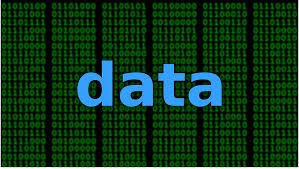
Today it’s evident that the future is extremely bright for data science professionals and learning Python is just the right thing to get your journey toward the field started. Let’s have a look at the steps.
4.1- Master Python basics
![]()
First of all, you need to get the basics right to learn Python. There’re lots of ways to accomplish this – from taking a course to self-teaching to watching tutorials. However, we strongly suggest taking a course for this purpose. And if you’re looking to enter the data science field, look for courses that are particularly designed to teach you Python in the data science context. During this stage, try to join a learning community where you can find like-minded people passionate about Python.
4.2- Learn Python libraries used in data science

Once you’ve gained a solid understanding of Python fundamentals, it’s time to learn Python libraries that are used in data science. The most important of these include Pandas, NumPy and Matplotlib. If you get stuck somewhere, seek help to a Python community and most likely you’ll get it.
4.3- Develop a data science portfolio

Assuming you’re planning to enter the data science field, a proper portfolio is a must. Your experience in working on different datasets should be clearly mentioned. This not only gives your fellow learners something to collaborate on but also demonstrates the future employers that you’ve actually invested your time to learn Python. During this stage, you should start working on developing other data science essentials like soft skills.
4.4- Learn advanced data science techniques

This is the stage where you should be learning advanced Python and data science techniques. Ideally, you should take an advanced course from a reputed institute. There’re different options available like taking free online courses, learning by reading books, attending an immersive data science bootcamp etc. However, if you truly want to ensure that you’ve covered all the points and want to be job-ready quickly, enrolling with a data science bootcamp should be your best bet. That way, you’ll not only be able to pursue your dream at a relatively affordable rate but will be able to develop some greatly useful connections as well.
4.5- Keep on learning
![]()
The field of data science is evolving quickly and the technologies and skills that are necessary to become a data science professional may not be the same tomorrow. So, you need to continue learning for both Python and data science fields to maintain a competitive edge.
In conclusion

For the above reasons and others, Python is so much beloved by data science professionals and programmers. Data science aspirants often come from different backgrounds other than computer science and feel extremely overwhelmed by the difficulty level of the field. But Python’s inherent simplicity and readability make it comparatively easy for them to pick up the learning pace. Also, the huge number of available dedicated analytical libraries means that data science professionals in almost every industry will find packages tailored to their needs already.
. . .
To learn more about Python, click here and read our another article.
The post How and Why Python is a part of Data Science? appeared first on Magnimind Academy.
]]>The post 7 Reasons to have a Python Certification appeared first on Magnimind Academy.
]]>But have you ever wondered why experts emphasize on getting a Python certification? In this post, you’ll know about the seven key reasons why you should obtain it.
1- What is a Python certification?
![]()
Python certification is something that one should try to get if he or she wants to improve his/her knowledge of the programming language and demonstrate the proof of his/her expertise. There’re some people who may have knowledge of the fundamentals of the language but don’t know about it in detail. In that scenario, once they get their Python certification, it proves that they’ve a robust understanding of Python.
Today, Python is considered as one of the most in-demand and popular programming languages. Whether you want to be a web developer or a data science professional, it makes sense to obtain a Python certification. Let’s have a look at the factors that have propelled this certification to such an excellent position.
2- Key reasons to have a Python certification
![]()
As Python has gained tremendous popularity over the recent years, a large number of organizations, regardless of their volumes, have started accepting it as their primary language when it comes to writing various codes and developing different applications. This has led to a significant number of organizations hiring candidates with Python certification. Here’re seven major reasons to focus on getting this certification.
2.1- You’ll have a greater chance of stepping into the field of data science

Python certification is hugely recognized by a lot of organizations that work with data. In fact, it’s the leading language embraced by a majority of data scientists. Though for years, private researchers and academic scholars were using MATLAB language for their work, everything started to change with the emergence of Python numerical engines like “Pandas” and “NumPy”.
Today, there’re some organizations that have made Python certification mandatory when they offer positions related to data science. Keeping in the mind the excellent pay coupled with other benefits offered to data science professionals, it pays to get a Python certification.
2.2- You’ll be able to enter the machine learning field
![]()
This is another key reason why you should try to get a Python certification. In the last few years, we’ve experienced exponential growth in the field of machine learning and today, it’s rapidly changing almost everything around us. From sophisticated algorithms to smart chatbots that can promptly answer queries – machine learning is transforming the way the world does business.
If you’re interested in machine learning, getting a Python certification is probably the best thing you can do to make the journey easier. Though Java also contains machine learning libraries, Python is more content-rich as the developer community prefers it over any other language when it comes to machine learning.
2.3- You’ll be able to enter web development
![]()
There’re countless web developers who prefer Python over other languages because it comes with a wide range of libraries and frameworks that make the work really easy for them. For example, a task that may take hours in another programming language can be accomplished by the developers within minutes with Python.
Owing to Python’s user-friendliness, it has been used to develop some of the most famous websites like Google, YouTube, Dropbox, Reddit, Instagram, and Spotify, among others. Looking at these websites, it won’t be an overstatement to say that it really pays to have a Python certification. Python offers the ideal way of developing websites and if you’re an aspiring web developer or programmer, you shouldn’t think twice giving yourself the chance to excel in your web development career by having this certification.
2.4- You’ll have the ability to earn more money
![]()
Even if you don’t want to enter the data science field, having a Python certification means you’ll be able to earn substantially more money than those who’re not certified. It’s a common fact that usually, earning more money requires more credentials and that’s exactly what a Python certification does to your profile. Getting a Python certification will surely need you to spend some money but once you become certified, you can switch to a high-paying job or ask for a raise at your present company.
In addition, Python certification plays a key role in the hiring process and is often considered as a great tool for screening and selection purposes. It helps to make your resume stand out of the competition, which would greatly increase your chances of getting a high-paying job because professionals with Python certification bring great value to the organization they work for.
2.5- Simplicity matters a lot
![]()
If you’re a beginner to the programming world, this is probably the biggest reason why you should focus on getting a Python certification at first. Python is exceptionally easy to learn and you can use it as a stepping stone for learning other languages and frameworks. As a beginner, you definitely want to start with something that’s relatively easy to master upon and Python ticks that box perfectly because it doesn’t come with complicated rules and difficult syntax.
2.6- Support from the community
![]()
When you’re trying to get a Python certification, it’s obvious that you’ll encounter problems in the learning process. Since Python is an open source language, it comes with a massive support base. Millions of developer work hard with it on a regular basis.
Whenever you’re learning something, a great community support is most probably the biggest thing you’ll need to excel in the field. Whenever you get stuck with an issue while mastering Python, you’re most likely to find a helping hand, thanks to the vast and active Python community.
2.7- Multipurpose application
![]()
One of the biggest advantages about learning Python and trying to get a Python certification is its multipurpose application. Python isn’t just tied to one thing. For example, R is only good at machine learning and data science but it doesn’t come into the picture when you work in the field of web development.
On the other hand, having a Python certification proves your expertise in the language and indicates that you can use it to do different things. From entering the fields of data science or machine learning or web development to automating your day to day tasks – a lot can be done using Python.
3- Things to keep in mind when you’re trying to get a Python certification
![]()
Your road to get a Python certification won’t be easy. So, we’ve put together our best tips here that would make this journey of yours relatively easy.
3.1- Code consistently
![]()
Consistency plays a crucial role when you’re learning Python or any other language for that matter. Try to code everyday to help develop your muscle memory. Though it may seem a little bit difficult initially, starting small and increasing it incrementally will gradually make it easier.
3.2- Learn together with others
![]()
Many may consider coding as a solitary activity, but in reality, it works the best when you learn together. So, in your effort to get a Python certification, try to surround yourself with others who’re learning Python. It’ll let you share the knowledge you gain along the way.
If you don’t know anyone, there’re lots of ways to find others who’re passionate about learning Python. For example, you can attend local meetups or events and join learning communities to find Python enthusiasts like you.
3.3- Try to develop something
![]()
When you’re preparing to get a Python certification, small exercises can turn out to be extremely helpful in making you confident with the language. Once you’ve gained a strong understanding of the fundamentals of Python, you should try to develop something. The successful effort of developing something is actually what teaches you the most. You should remember that most of your learning will come from developing something using Python.
3.4- Try to do pair programming
![]()
Pair programming refers to the technique where two developers work at a single workstation to accomplish a task. It not only gives you a chance to have your code reviewed by someone, but also lets you observe how someone else may be thinking about a problem. This approach makes you exposed to multiple ways and ideas of thinking, which in turn would help you to improve your own problem-solving skills when you get back to solitary coding.
Final takeaway

We hope that by now, you’ve got a clear understanding of why you should get a Python certification. Remember that having a Python certification not only boosts your marketability but also adds great amount of value to the company you work for.
It acts like a recognized benchmark of knowledge and skills that augments the company’s reputation. And that’s probably the main reason why lots of companies not only focus on recruiting candidates with Python certification, but also encourage their existing employees to obtain one so that they can take a measurable advantage. Though there’re several ways to prepare for and get a Python certification, we strongly suggest you to do it from a reputed institute to make the journey relatively easier.
. . .
To learn more about Python, click here and read our another article.
The post 7 Reasons to have a Python Certification appeared first on Magnimind Academy.
]]>The post What are the benefits of Python certification? appeared first on Magnimind Academy.
]]>This may leave you wondering why almost every tech-driven organization, from giants to startups, gives so much preference to those having a Python certification.
1- A few words about Python

Python is a general-purpose, high-level dynamic programming language, which has been around for almost thirty years now. It’s being widely used in a diverse range of applications – from machine learning to web and desktop apps to network servers and much more.
While Python can be used for small projects, tech giants like Microsoft, Google, Facebook, Netflix, NASA etc. also make use of this programming language.
2- Benefits of having a Python certification
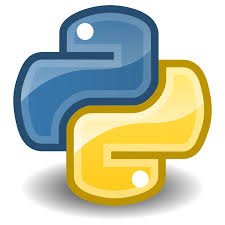
By reading till now, if you aren’t convinced enough whether you should earn a Python certification, have a look at the benefits of obtaining one.
2.1- It’s the proof of your expertise in Python

In today’s competitive landscape, it has become more important than ever to obtain recognition for your expertise in Python to be able to demonstrate your skills. These days, potential employers don’t just look at candidates’ portfolios. They also look for different ways to validate the knowledge of candidates.
When it comes to recruiting Python programmers, recruiters frequently look for Python certifications to shortlist candidates who’ll receive a further chance to demonstrate their skills at the next interview rounds. Not having a Python certification will certainly lower your chances of getting through the first round of the selection process. And this is probably the biggest benefit of obtaining a Python certification.
2.2- Gives you a sense of achievement

Even if you’re a great Python programmer, the sense of achievement of a goal always motivates you to go that extra mile. From that point of view, earning a Python certification gives you the much-needed motivation to put your best foot forward. In addition, investing time and effort to earn the certification offers you another chance to check and validate your skills.
This is extremely crucial for any learner to clearly understand where he or she stands with respect to the learning process. In other words, preparing for getting a Python certification not only helps you evaluate your skills and find out areas for improvement but also provides you with an objective overview of your entire skills profile, which is perhaps the second biggest benefit of trying to earn a Python certification.
2.3- It gives you a competitive edge

As the demand for Python programmers is growing exponentially, having a Python certification helps you stand out of the pack, especially when there’s also a rise in the number of developers, programmers etc competing for some of the best jobs.
A Python certification not only acts as a proof to employers that you’ve got the necessary expertise but it also lets them understand that you’re actually willing to expand your knowledge, which is another major benefit of obtaining such certification.
2.4- Paves the road to better jobs

Having a Python certification means you’re more acceptable to reputable recruiters in your domain. As we’ve already discussed that a Python certification has become one of the key requirements to a number of recruiters, such a certification can greatly help you move a step closer to landing better and high-paying jobs.
As a fact, certified professionals generally earn more than their non-certified peers. So, once you’ve earned a Python certification, you’ll be in a position to expect a higher salary with more prestigious job positions. In short, having a Python certification strengthens your position as an expert. You should keep in mind that whenever your resume reveals that you’ve specific skills, you’ll need to prove them and only a certification can help you attain that goal, at least at the initial screening stage.
2.5- You’ll bring lots of benefits to organizations

From an organizational aspect, having employees with a Python certification brings a multitude of benefits to it and that’s why a significant percentage of companies not only try to recruit certified Python professionals but also encourage existing employees to obtain Python certification.
Having employees with a Python certification is considered as the benchmark of knowledge and skills that can be incorporated into an organization’s skills framework, and ensures that teams working on different projects are trained to expected and consistent levels of the desired skills. Certified professionals also help to minimize downtime as they come with proper skills to deal with issues and solve different complex problems faster than their non-certified peers.
In short, with a Python certification, you are aptly suited to bring accuracy and efficiency to a company and that’s the key reason why lots of potential employers emphasize on recruiting certified Python professionals.
3- Why you should try to earn a Python certification?

You may ask why we are emphasizing on obtaining a Python certification over certifications in other programming languages. Let’s have a look at the benefits of trying to earn a Python certification in particular.
3.1- It’s easy to learn

The biggest benefit of trying to obtain a Python certification is that this programming language is extremely easy to learn and you can use it as a stepping stone into a broad range of other programming languages and frameworks. If you’re a complete beginner who is trying to step into the programming world, the first thing you probably want is the simplicity of the language you’re looking to learn.
Once you complete your Python certification, you can always explore other programming languages to broaden your knowledge rather than being confined to a single language.
3.2- It’s versatile
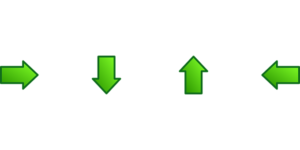
Even though Python is an easy to learn programming language for beginners, it comes with all the resources and power necessary to get high-end work done. Almost everything can be done using it and there’re lots of serious projects developed with Python.
Once you’ve obtained a Python certification, you can find lots of opportunities in data science, web development, machine learning, AI, game development, and more. So, if you want to step into the coding world but aren’t sure how to go about it, probably earning a Python certification would be your best bet.
3.3- It’s of increasing value and demand

We’ve already discussed that a number of industry leaders use Python as their primary and secondary programming language, which demonstrates that the growth of this language is almost evenly spread across industries. And because of its simplicity, user-friendliness, scalability, and innovative nature, Python is also preferred by a large number of startups. So, having a Python certification means you’ll never run out of valuable job opportunities.
3.4- It boasts of a huge community

Another major benefit of trying to obtain a Python certification over other programming languages is the presence of a massive community. You’re probably aware of the fact that a robust community is extremely handy when you’re learning a programming language or developing a project using it. If you face any technical issue or have any query while learning or developing projects using Python, you can always seek guidance from thousands of Python community members on social media platforms, forums, Q&A websites, and more.
In addition, since Python is open source, if you want, you can learn every aspect of it to strengthen your knowledge. This combination of a massive and active community and openness means almost everybody, from professional developers to casual programmers, can engage with Python at the level they need.
3.5- It boasts of huge resources

Python boasts of a huge number of standard libraries, which is another key benefit of learning it. The more it’s being used by people and companies, the more resources are being developed around it to help developers accomplish complex tasks without many coding difficulties.
Today, Python has become the leading tool for the scientific community, thanks to its varied specialist libraries. There’s PyGame for game development, NumPy for data science, and TensorFlow for machine learning, just to name a few.
Wrapping up

Obtaining a Python certification is worth considering if you’re trying to take your career to the next level in terms of better job positions and a higher salary. This programming language is chosen by some of the best companies in the world and it’s growing quite fast. It’s approachable, versatile, simple, and complete at the same time.
Python is also a perfect choice for machine learning, data visualization, and data analysis. So, if you’re planning to step into the field of data science, earning a Python certification is probably the first thing you should aim for.
One thing you should remember is that there’re several institutes that offer training courses on Python. You should try to enroll with an institute where the courses are taught by experienced professionals who know everything about Python and can help you gain complete knowledge of the language.
The other two things you should focus on include the scope of practicing your skills and reasonably priced course fees. Ideally, you should opt for a Python certification program that includes hands-on training and certification to optimize the benefit of your investment.
. . .
To learn more about Python, click here and read our another article.
The post What are the benefits of Python certification? appeared first on Magnimind Academy.
]]>The post Is Python certification cost increasing? appeared first on Magnimind Academy.
]]>- According to 92% of employers, IT certifications help to ascertain the reliability of IT employees
- For 91% of hiring managers, certifications act as an important element in their hiring criteria
- According to 92% of employers, higher salaries are given to IT certified individuals
- 80% of HR executives verify certifications among job candidates
Perhaps these figures explain why there’s a mad rush among candidates to get certified despite rising certification costs. If you’ve your eyes set on entering the field of data science, you can consider earning a Python certification.
Guido van Possum – a Dutch programmer, developed Python in 1980s. You can use this object-oriented and open-source programming language for an extensive range of applications such as developing, scripting, and testing. Thanks to Python’s simplicity and elegance, top technology organizations like Google, Dropbox, IBM, Quora, Cisco, Hewlett-Packard, Mozilla, Qualcomm etc have implemented it. Before we take a look at the rising certification costs of Python, let’s try to understand what makes this programming language the most preferred choice of a majority these days.
It’s easy to learn and efficient

Python is extremely simple and easy to learn – thanks to its close resemblance to the English language. When compared to some other programming languages like C++ or Java, its learning curve is shorter. What’s more, you can accomplish a lot with it by often using fewer lines of code than other programming languages, say Java.
Though some critics may say Python’s execution speed to be somewhat problematic, its benefits far outweigh performance concerns, if any. Additionally, there are many libraries, packages, and modules for Python, which can make lives of those learning or using Python easier.
For example, instead of writing complex and lengthy loops to parse and find patterns in text, you just need to import the regular expressions module, which will help you to get the job done with very little code. Beautiful Soup – a Python library that many use for web scraping to parse data from XML and HTML files, is another example of how user-friendly Python is.
Even as a beginner, you can quickly learn to automate tasks like handling excel spreadsheets and PDFs, working with files etc with Python. In case you are interested in the field of data science, you may even dive into data analysis, data visualization, machine learning, Django, and much more after you’ve got the basics of Python right.
It’s backed by an active and large community

Python programming language has a large, active, and thriving global community of millions of software developers. These professionals interact with each other online and offline via numerous virtual and physical locations and help guide the community with global, regional, and local events. Thanks to this large community, you’ll find more than a lakh projects existing in the Python Package Index (PyPI), which would help serve almost all kinds of requirements.
You can consider the PyPI repository similar to your hardware store, where you go to find the requisite tools for finishing a project. This tremendous support is another reason why learning Python features on the top of the list of many IT professionals and even students.
Python is the trendiest programming language
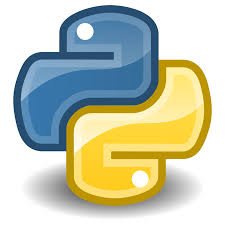
Thanks to the rising interest in AI (artificial intelligence) and data science, professionals having the relevant qualifications, certifications, and skills are in high demand. You can get an idea of how big the future with these technologies will be by considering what IBM predicted – by 2020, the demand for data scientists will rise by 28%.
While data scientist has been ranked by Glassdoor in 2018 as the number one best job in the US, artificial intelligence is flaunted as the future of technology. For machine learning (ML) professionals and data scientists, Python is emerging as the preferred choice. That’s because it comes with a robust and rich set of libraries, such as Pandas for cleaning, manipulating, transforming, and analyzing data, NumPy for ML and data science, TensorFlow for machine learning, scikit-learn for machine learning, Keras (a user-friendly, high-level neural network library) for deep learning, and several others.
Thanks to such vast and useful resources that make learning and programming with Python easier, a growing number of people are opting to learn Python and hone their skills in the programming language in case they already have the working knowledge of it.
To understand the reason behind the rising cost of Python certification, you’ll also need to know what’s driving the huge demand for Python certified professionals. Let’s try to decode the reason.
Python had been a hidden gem in the domain of IT

Despite being in existence since the late 80s, Python wasn’t noticed for decades, perhaps because it wasn’t marketed properly. Additionally, there were some problems with its fundamental concept, which acted as a hindrance in this programming language becoming popular.
The scenario changed when Google brought this language to the forefront in the 21st century and made some necessary alterations on its core logic setup and configuration. Following those changes, Python gained enhanced power and performance. It even deleted fully repeated methods and modules from its standard library to make it lighter, faster, and smoother.
At present, Python’s performance is two to three times of what it was during its initial days. All these factors have contributed to making it one of the most influential programming languages in the technical industry. No wonder why it has gained a huge popularity among tech developers and experts.
Python lets developers build applications in different domains

You’ll find several similar features between Python and traditional programming languages such as C++ and Java because the former Python was inspired by these languages. Just like Java, Python too has the capability of setting up any type of application. That means a Python developer is capable of building desktop software, web application, smartphone games, and hardware programs.
The beauty of Python lies in the fact that it doesn’t bind the skills of Python programmers to any particular domain. Thus, it allows these professionals to build any type of applications irrespective of platform, domain, and device.
Python is famous for its quality and reliability

Python is celebrated for its efficiency, reliability, and speed. You can not only project the Python applications under any setting, but even enjoy remarkable performance there. Additionally, it’s considered as the safest programming language.
Python comes equipped with the capability of creating enterprise-standard, extremely secure application using the support of 128-bit encryption technology. What’s more, in Python applications, you can even implement multi-tier security features.
Why Python certification costs are rising fast

Now that you know why there’s a trend of getting Python certifications from reputed institutes, and what drives this rush to become an expert in this programming language, you can understand why Python certification costs are rising steadily. After all, a reputed and reliable Python certification training curriculum would help you master the relevant concepts and gain thorough experience on writing Python code and packages such as scikit-learn, Matplotlib, Pandas, NumPy, SciPy etc. You’ll also learn how to use lambda functions and web scraping libraries, writing Python code for Big Data systems like Spark and Hadoop etc.
Examining and analyzing case studies and working on real-world projects to get hands-on experience via online Python lab would be some other activities that your Python certification is likely to include. When you’ll learn all these fast, it would surely come with an associated cost. Yet, if you compare such certification costs to comparable full-time courses, the former would be a fraction of what the latter would have cost you.
When searching for Python certification, you will find various choices offered by online portals and even reputed companies like IBM etc. It’s obvious that courses offered by reputed institutes or portals, or those having industry stalwarts and experienced professionals as your instructors would cost more than the ones that are hurriedly put together without much to boast about.
So, when short-listing institutes or online learning platforms offering Python certification, you shouldn’t be guided by the certification costs alone. It’s true that you should consider the cost and select one that suits your budget but while doing so, make sure not to compromise with the course quality on offer. After all, what use will it be to save some money if your ultimate goals of achieving the requisite knowledge of Python to make a career leap or bag that coveted job remains unfulfilled just because the curriculum was lackluster or wasn’t supported well by the teachers involved or resources?
Final words

It’s true that Python certification costs are rising. But it’s equally true that if you invest in a quality course, you’ll be able to get returns that worth a few times the certification costs that you would have borne.
. . .
To learn more about Python, click here and read our another article.
The post Is Python certification cost increasing? appeared first on Magnimind Academy.
]]>